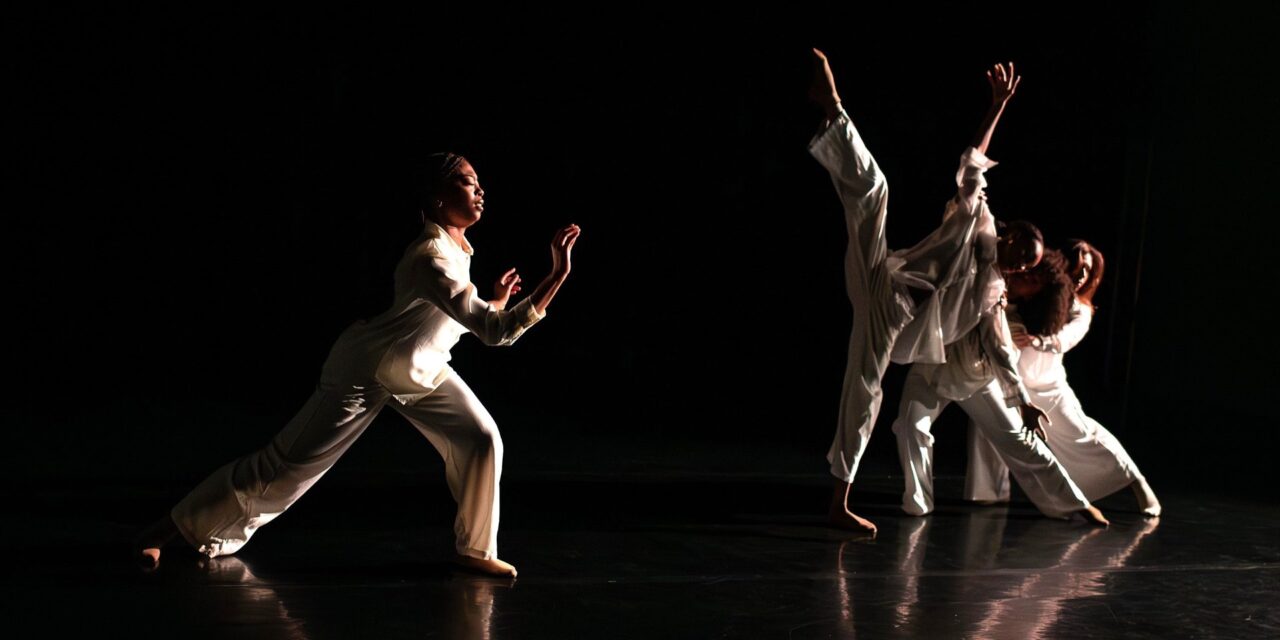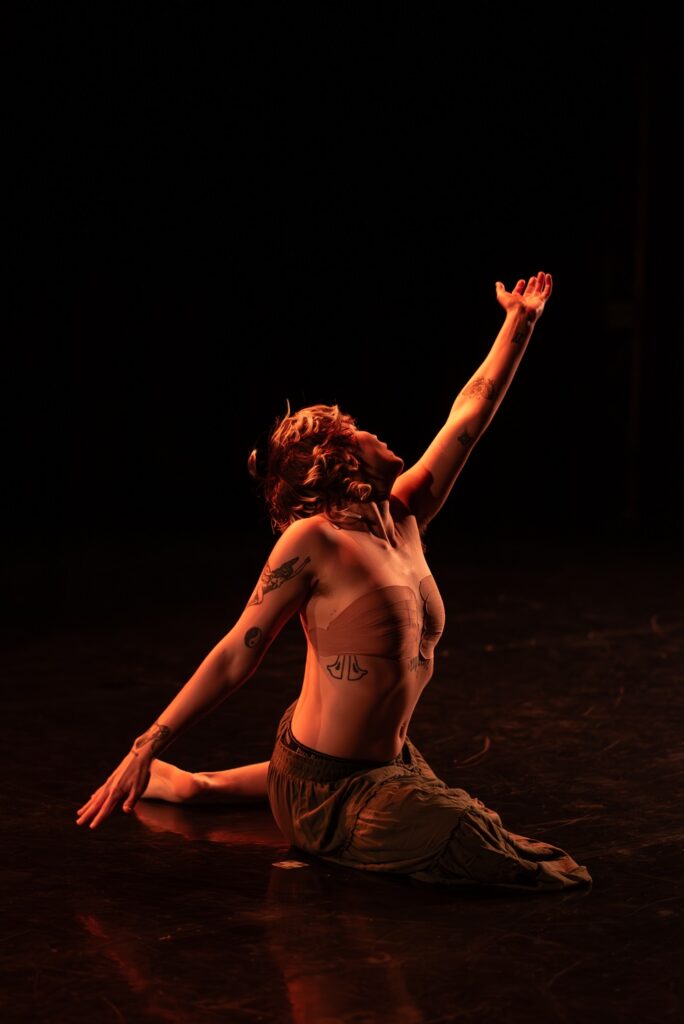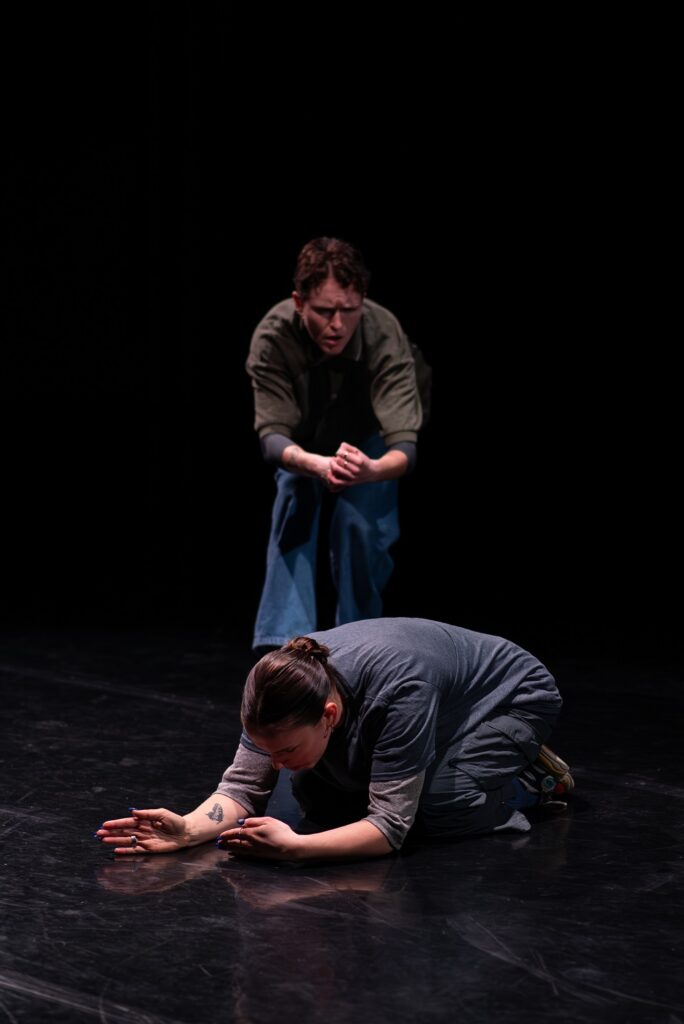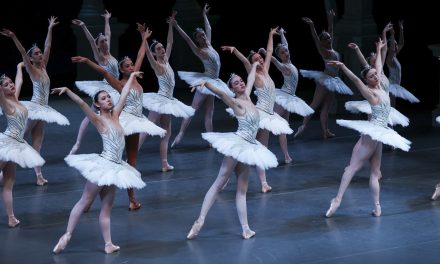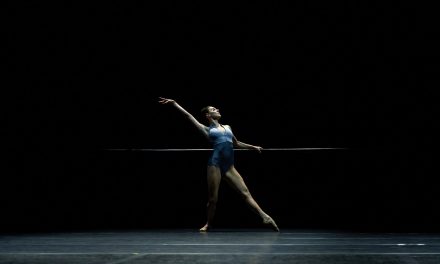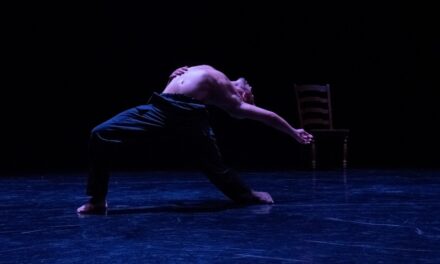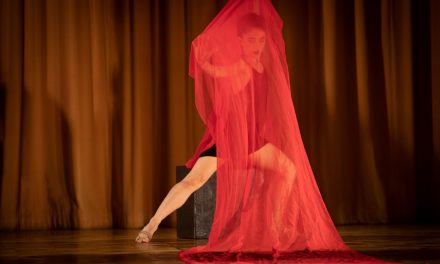On Saturday, March 8, 2025, MashUp Contemporary Dance Company presented their Choreographers’ Showcase at Stomping Ground L.A. as part of their 9th Annual International Women’s Day Festival. In addition to this event, the Festival featured a Women in Dance Summit, a community-building kickoff party, and a day of master classes. MashUp’s mission centers around “[uplifting] female-identifying artists and [building] community through contemporary dance.” Attending the matinee performance, I enjoyed a strong program of work, tightly packed into an hour-long, fast-moving program.
There was no shortage of technical prowess, power, and detailed musical choreography throughout the program, however, almost all of the works did seem to represent a very similar style of contemporary dance; there was a lot of shared vocabulary featuring smooth floorwork, deep pliés, and gestural work. So while it was all enjoyable and certainly celebrated the work and strength of female artists, I think that there are broader perspectives that could have been shared on the stage in this showcase, which may be a matter of festival selection or of the outreach to attract a broader range of artists to submit work.
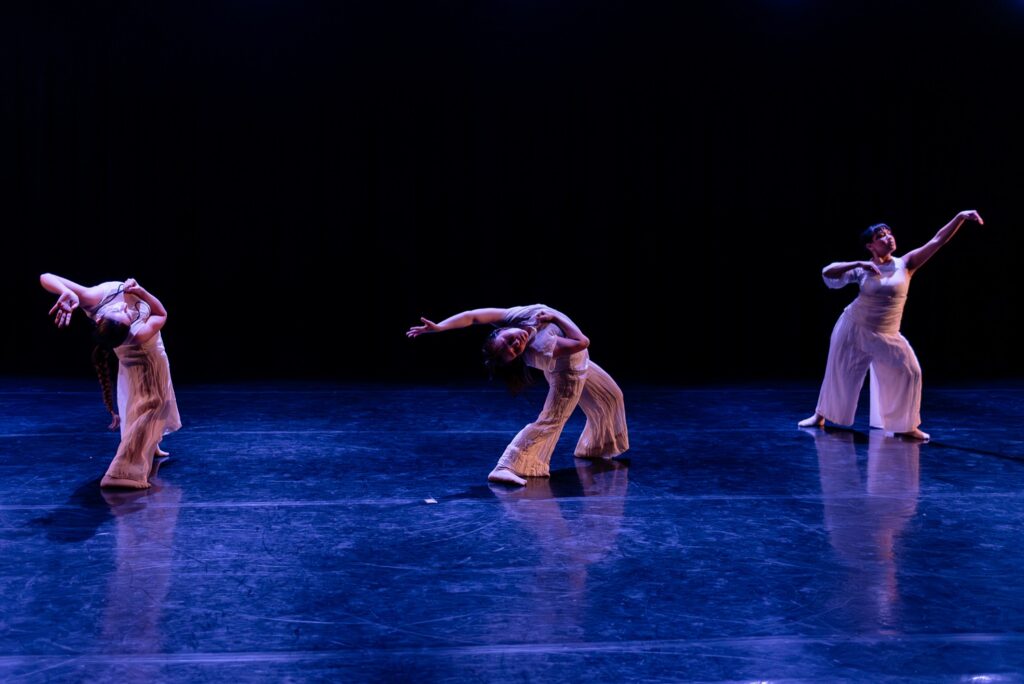
Jennifer Vieweg, Jayden Cardona and Konstantina Ohanian in Vieweg’s “that’s the right idea” – Photo by Kelly Mustapha.
The evening began with no introduction as we dove into the first work, “that’s the right idea,” choreographed by Jennifer Vieweg. This piece featured three dancers in white, Vieweg with Jayden Cardona and Konstantina Ohanian. The dancers moved first as individuals, undulating and gesturing with a grounded fluidity. The lighting was a simple spotlight and the dancers moved in and out of being fully lit – in this intimate space and with their white costumes it worked since we could still see them even if they weren’t in the spot. As the piece progressed, the dancers began to interact more to the soundscore of gentle piano alongside ambient clicking and whirring noises. Even as they began to intertwine in partnerwork, their initial contact would seem incidental rather than sought out, and they often faced the same direction or were back to back, rather than looking at each other. As the piece built, they all began to interact together and this led to a unison section that felt like it was nicely built up to. Their movement quality seemed to be lighter and more outward in the later part of the piece after they had connected and interacted, perhaps showing the impact they had on each other. The piece ended with a simple gesture phrase leading to the dancers walking off together, but with the simplicity of the final actions, slight differences in hand placement and timing were more visible, and the ending came quickly, not matching the subtle progression that most of the piece took us through. This was overall a beautiful work, but I’d love to see the ending fleshed out further.
There was no bow and a quick transition to the next work, and I briefly was not sure if the second piece was a continuation of the first because it also featured dancers in white and gentle piano music, this time paired with sounds of water. “Womb,” choreographed by Genevieve Carson, featured the strong dancing of Emma Cotton, Ferny Georges, Diarra Grace, and Mengeh Windlander. The dancers started and ended clumped together in this brief work. They showed off nice lines in various supported and individual poses. The gestures were simple and often reached outwards and the movement language referenced ballet. In one memorable moment, the dancers shuffled in first position like a bourrée on flat, reminiscent in their all white of four swans in a modern retelling of “Swan Lake.” The program notes that they were representing four eternal guardians “[floating] with graceful ease […] bringing light and acting as a protective buffer to the chaos” and while the dancing matched this, I felt that their expressions could have shown more of this softness and peace.
“It Is What It Is,” choreographed by Sam Chavez, and brilliantly performed by Harper Harris, was a highlight of the program. In a festival centered around gender, this piece explored the fluidity of this construct. Harris wore a long skirt and nude tape over her breasts, and as she started the work with an acrobatic floor position where I could only see her bare muscled back, it was unclear if the dancer were male or female, and that seemed to be part of the point. Harris grooved to the music by Blood Orange, throwing themself around into technical steps, wild yet controlled turns, heavy chugs and stomps, and fluid floorwork. It felt like watching someone alone dancing without abandon, until a big shift midway through the piece, where the lights became cooler and the dancer seemed to see the audience and become more self-conscious. After this vulnerable interlude, the lights began to change color and move and the dancer refound their groove, now with awareness of the audience, seeming to show a journey of self-acceptance. This piece was refreshing and a delight to watch.
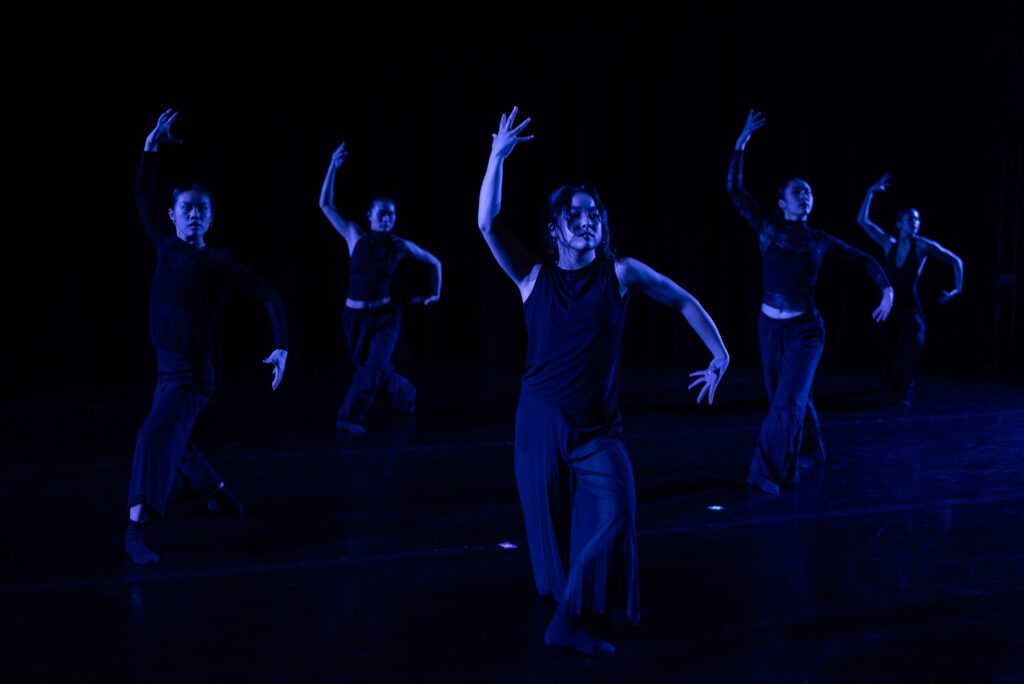
Amber Xu, Amelia Koran, Erin Co, Maddie Skowronek, Mikayla Knestrick, Sakura Amano, and Maia Driz-Diaz in “Phasic Symbiosis” by Kate Myers – Photo by Kelly Mustapha.
“Phasic Symbiosis,” choreographed by Kate Myers, featured a strong cast of seven dancers in black. The music was another mix of gentle piano and ambient noises. Myers did a great job with the overall structure of the piece and her use of the space – dancers would walk in and out of the space, dance in groups, seamlessly switching the groupings so that nothing was ever stagnant. As the soundscore changed into a mix of distorted voices, the dancers moved with more angular shapes and punctuated actions, always showing great control and grounded energy. This piece felt like a visualization of the soundtrack and I particularly enjoyed the final section danced to “O Superman” by Laurie Anderson. After the continual shifting in groupings and formations, the piece came to meditative calm near the end as the dancers did simple gestures in unison, then swirled around, then found another sequence of unison, like they were getting closer to finding identity as a group. At the end, the dancers walked off together, and it felt like a sudden resolution, since they had just started to find group synchronicity. After the slow and winding build of the piece, it felt too decisive and fast. The work was danced well by Amber Xu, Amelia Koran, Erin Co, Maddie Skowronek, Mikayla Knestrick, Sakura Amano, and Maia Driz-Diaz.
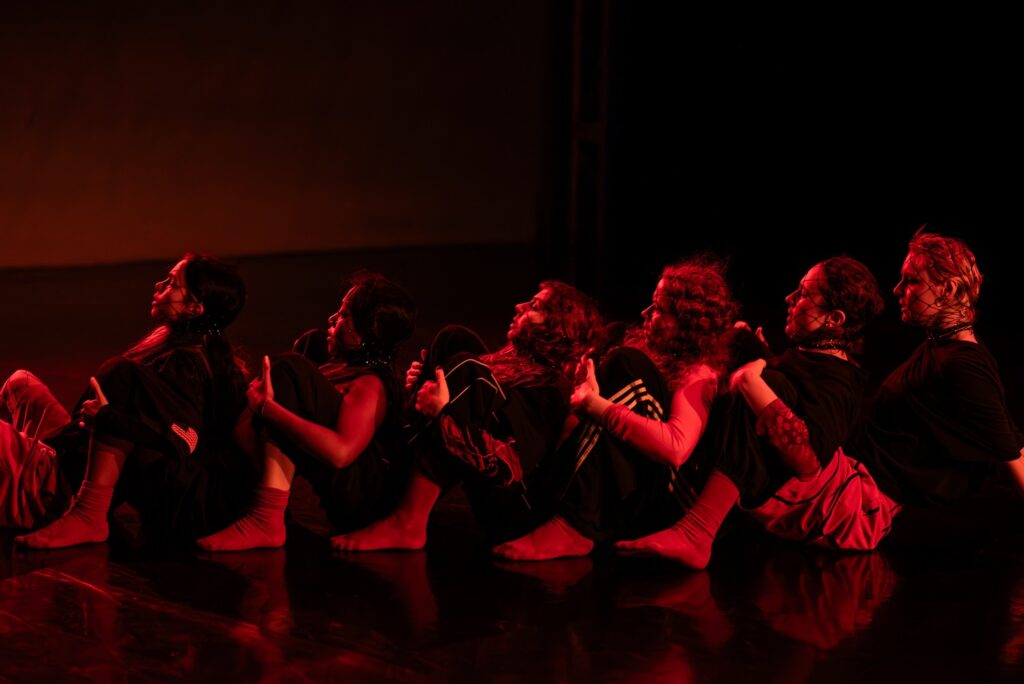
Chloe Lopina, Lydia MacDonald, Madi Ostrach, Sasha Serdyukov, Bethany Violett, and Jess Wicke in “FLEX UP” by Gigi Todisco – Photo by Kelly Mustapha.
“FLEX UP,” MashUp Dance Company’s own contribution to the show, was choreographed by GiGi Todisco and performed by Chloe Lopina, Lydia MacDonald, Madi Ostrach, Sasha Serdyukov, Bethany Violett, and Jess Wicke. This piece played with repetition, growth, and patterns, bringing together contemporary vocabulary with Electronic Dance music. The dancers, dressed in red and black and with fishnets over their heads, started in a clump under red lights and began to crawl from the corner. The structure of the choreography matched the way the music slowly built up – the dancers would riff on a repeating motif and then once one person suggested the next idea, they would all slowly join in. The movement was powerful and they moved expertly in and out of unison, quick ripples, and sharp thrashing actions. The dancers eventually left their clump and explored individual movements and pulsing in their own space as the lights strobed. The piece slowed down as a trio of dancers found unison, while others pulsed or lay still. The lights faded while the music and dancing continued. The only thing that took me out of this well-constructed ending was the music cutting out sharply – with the slow fade of movement and lighting, the song also fading out would have been less jolting.
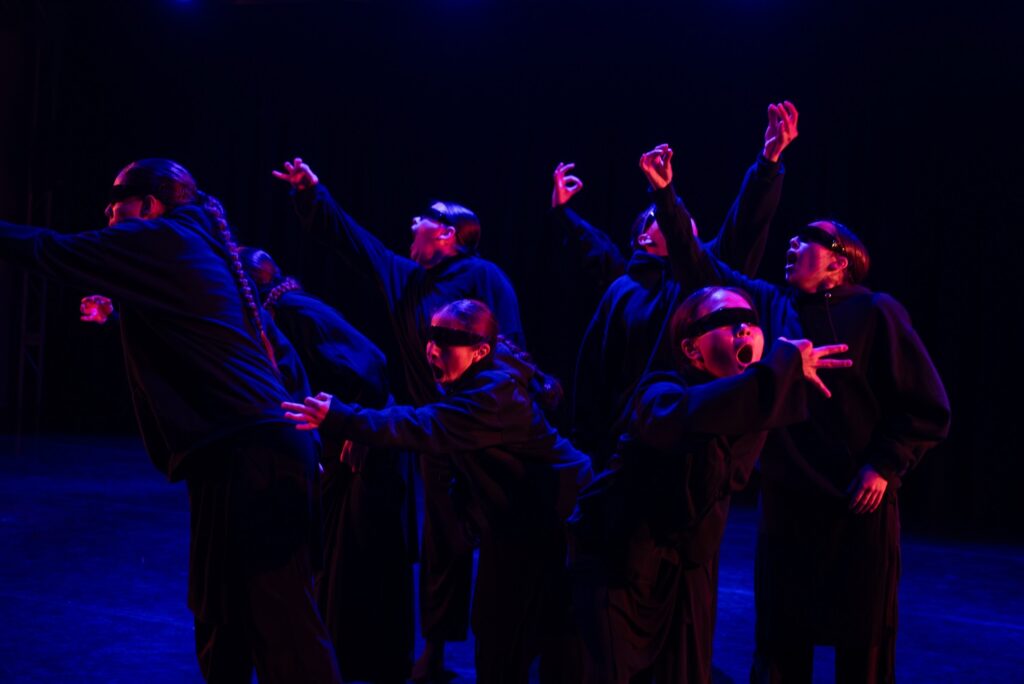
Lexi Amundarain, Shawnee Avila, Halie Donabedian, Julia Gonzalez, Jordyn Maxfield, Lexi Maxfield, Joseph Ortega, and Nao Yamashita in “Fit In or Fit Out” by Hannah Millar – Photo by Kelly Mustapha.
The next piece, “Fit In or Fit Out,” choreographed by Hannah Millar, also featured an Electronic Dance music track. Millar’s piece was an extremely captivating and strong work that showed the dancers pulsing and prancing around the stage in a tight clump. They wore layers of black and futuristic sunglasses that prevented us from seeing their faces and expressions as individuals. The weird yet cool movements were precisely musical and usually with a bound energy – reaching out and then snapping back inward. In one moment, they stopped travelling and all seemed to pull a string in different directions out of their gaping mouths before snapping it back in sharply and covering their mouths. The dancers would shift from unison to various groupings, always moving around the space and always in their clump. The topic of the piece was conformity, and it was an effective and enjoyable work. I enjoyed the contrast with the prior work where the dancers found freedom in the similarly pulsating music, while this cast seemed stuck in conformity. The dancers who brought this to life were Lexi Amundarain, Shawnee Avila, Halie Donabedian, Julia Gonzalez, Jordyn Maxfield, Lexi Maxfield, Joseph Ortega, and Nao Yamashita.
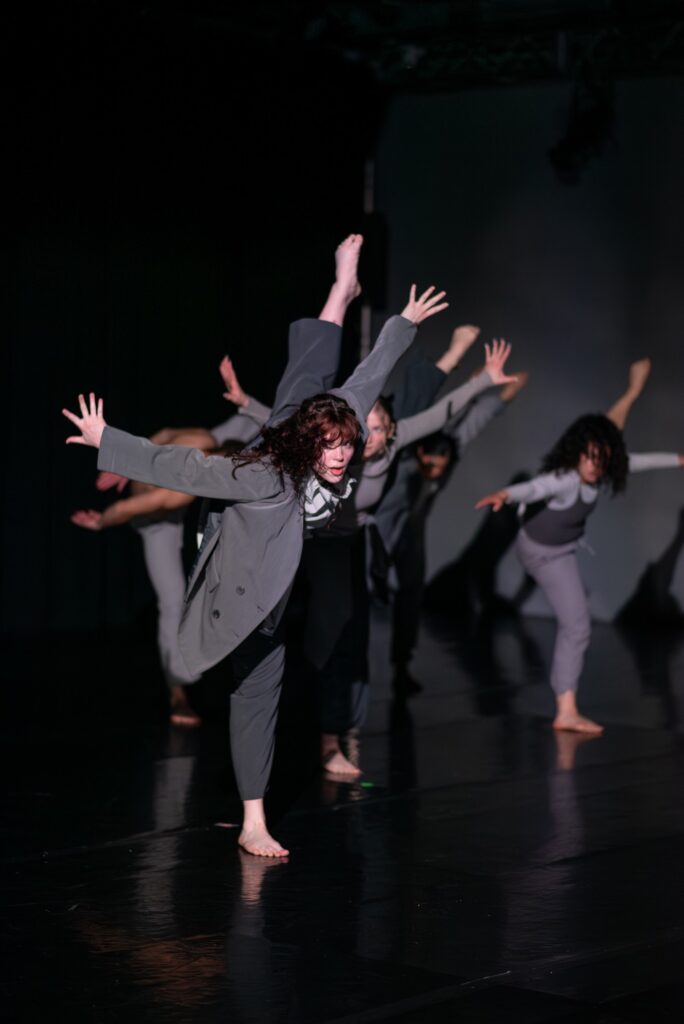
Cedric “Thane” Sanders, Emilia Skjegstad, Kiara Cieslinski, Kylie Kaneshiro, Mia Harris, Sophie Fouled, and Theresa Decline in “OTTO” by MaryAnn Chavez – Photo by Kelly Mustapha.
“OTTO,” choreographed by MaryAnn Chavez, was a brief work that featured strong dancing to a dramatic, operatic song by Woodkid. The seven dancers in grey set a dystopian scene – it felt like they were distrustful of each other, even as they danced together, and there were nice layers to the choreography. There was a strong gestural section in the middle featuring repeated motifs of pointing and of protective or defensive actions. The layered costumes mostly covered up the dancers, except for the bare-chested male dancer, and I did wish that either everyone was equally covered up, or there was more skin showing from dancers of both genders, since gender did not seem to otherwise come into play. I ultimately did not find this piece as memorable as others because it did not seem to have as evident of a perspective. The powerful dancers in this piece were Cedric “Thane” Sanders, Emilia Skjegstad, Kiara Cieslinski, Kylie Kaneshiro, Mia Harris, Sophie Fouled, and Theresa Declines.
One of the most distinct works of the show was “STEALTH,” choreographed by Tori Gorny, and danced by Gorny and Jess Alba. Gorny and Alba were dressed casually in sneakers, layered shirts, and track pants and began on the floor doing complex, percussive gestures on the floor. The music sounded like a metronome, but with a bit of a lilt, and it later became clear that it was one of the backing sounds to Frank Ocean’s “Super Rich Kids,” but extended. The dancers began to move as one and went through an impressive routine of nuanced micro-gestures with exacting togetherness. The dancers added their own soundtrack to the repeating beat with the sound that accompanied many of their movements. Some moves would just pulse or twitch by an inch or less, and some of the most satisfying moments were when one moment would suspend for a longer time and the next sharp action would pounce – the two dancers must have spent long hours of rehearsal counting to find this kind of synchronization. As the music continued into the recognizable track, the dancers moved bigger but still with the same detailing and musicality. At the end, one pulsed on the floor while the other was still dancing and the piece came to an extremely satisfying end when the standing dancer dropped sharply exactly as the lights and beat ended.
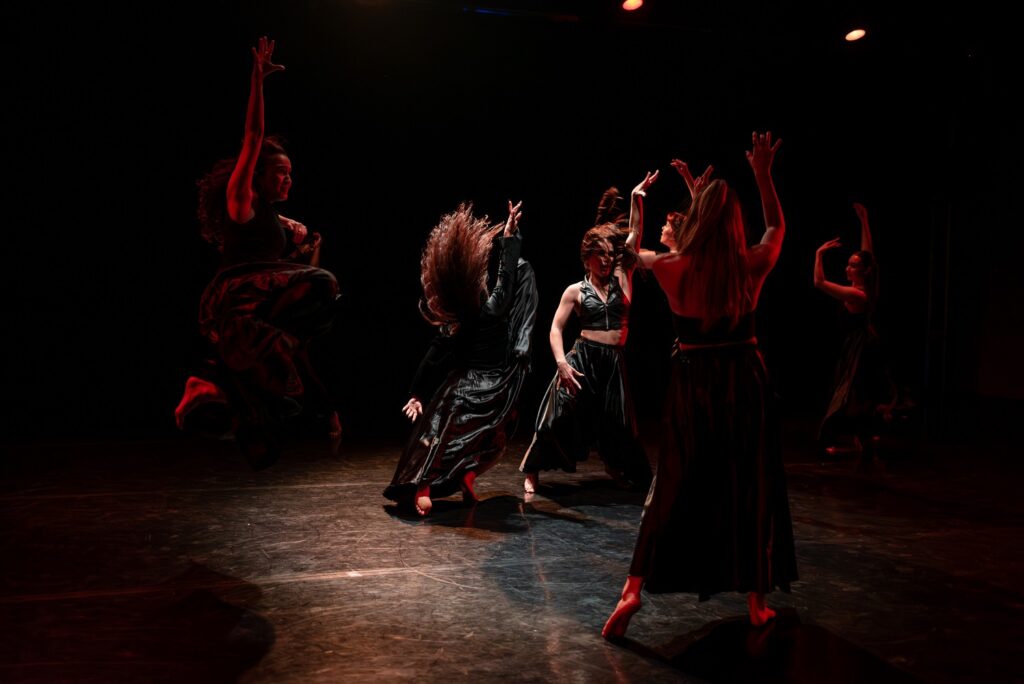
Cailey Fono, Mia Harris, Elle Holland, Bel Housner, Kasey Latten, Valentina Marcano, Lyssy Salvador, and Ashton Titus in “Covenant” by Ashton Titus – Photo by Kelly Mustapha.
Finishing out the program with an enjoyable, dramatic witchy saga was “Covenant,” choreographed by Ashton Titus and danced by Cailey Fono, Mia Harris, Elle Holland, Bel Housner, Kasey Latten, Valentina Marcano, Lyssy Salvador, and Ashton Titus. The piece featured ritualistic stomping, dramatic swishing of their black satin skirts, ecstatic dancing and shouting, and seemed to look at the community women build, sometimes due to being ostracized and othered, and how information is passed down through oral tradition. Throughout the piece, one dancer would be featured in a solo as others danced around her or watched, often in a semi-circle. There were interludes of group dancing, and we could feel and hear, with the stomping and whipping skirts, the power in their movements. At the end, the group became a hollering pack, moving through the space. The piece ended with various circular patterns around a spotlight – the group would dance in one circle, then break off into two or more groupings, still highlighting the idea of a circle. The music and lights faded as we heard the dancers continue, representing how women will continue to come together and build community, into the blackout. This work showed a strong narrative and ended the program with a clear vision.
To learn more about MashUp Contemporary Dance Company, please visit their website.
For more information about Stomping Ground L.A., please visit their website.
Written by Rachel Turner for LA Dance Chronicle.
Featured image: Emma Cotton, Ferny Georges, Diarra Grace, and Mengeh Windlander in “Womb” by Genevieve Carson – Photo by Kelly Mustapha.

